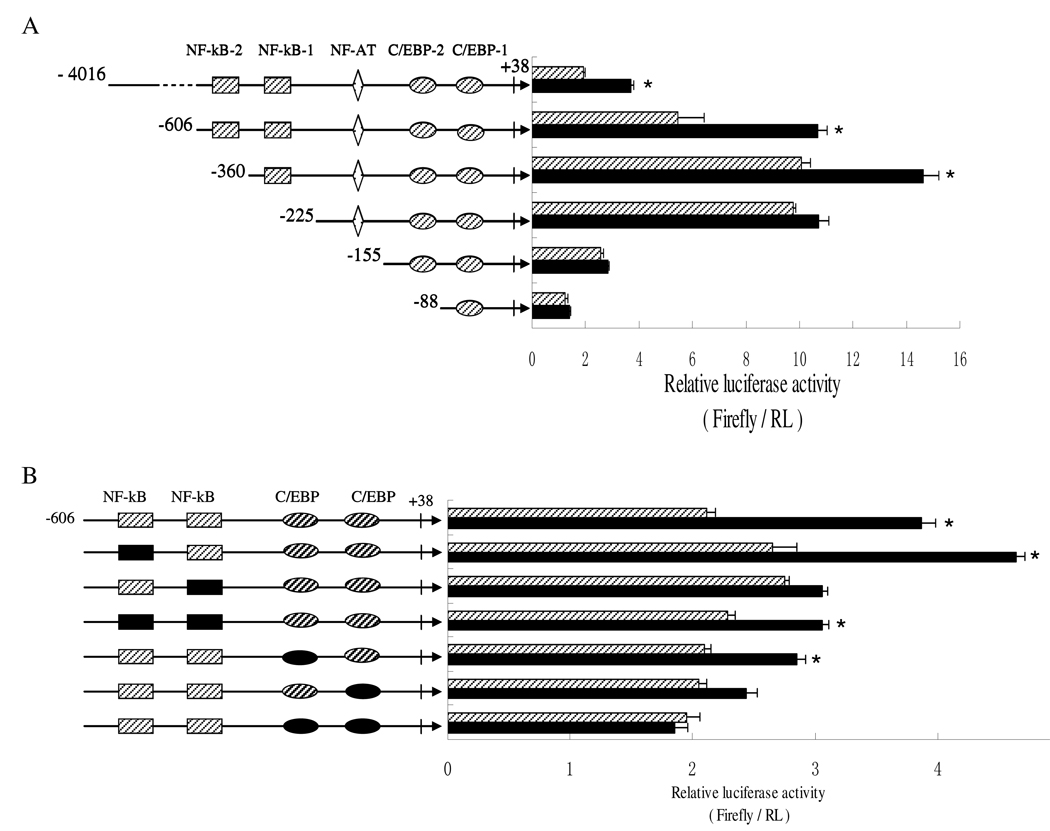Fig 4.
NF-κB and C/EBP transcription factor-binding elements within the IL-1β promoter are involved in TAT regulation of IL-1β expression. A and B) Luciferase reporter assays with the indicated IL-1β promoter and Renilla luciferase RL-TK reporter as an internal control was performed in THP-1 cell with (black bar) or without (slash bar) 100 ng/ml TAT for 12 hours. Assays were performed in triplicate and expressed as relative luciferase activity (Firefly / Renilla). Results are expressed as the mean±SD of three independent experiments. Differences between TAT-treated cells and normal control cells were considered significant at P < 0.05. *, p<0.05; **, p<0.01; or ***, p<0.001. C and D) Monocytes were treated with or without TAT for 2 hours. Nuclear extracts were isolated and analyzed for binding to DIG-labeled probes corresponding to the NFκB-binding elements −413 to −403 (C, lanes 1–4) and −296 to −286 (C, lane 5–10) and C/EBP elements −40 to −32 (D, lane 1–4) and −90 to −82 (D, lane 5–8) of the human IL-1β promoter. Specificity for the probe was confirmed by a competition test with either 50-fold excess unlabeled mutated (mt 50×) NFκB probe (C, lane 3 and 7), wild type (wt 50×) NFκB probe (C, lane 4 and 8), wild type (wt 50×) C/EBP (D, lane 3 and 7), or mutated (mt 50×) C/EBP probe (D, lane 4 and 8). Cells were also treated with TAT for 1hour after 2-hour pretreatment with either 25 µM U0126 (lane 9) or 20 µM SP600125 (lane 10). Arrows indicate specific binding bands. The results shown are representative of two separate experiments.



